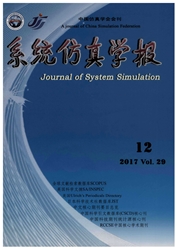

 中文摘要:
中文摘要:
如今,SoC 设计对片上资源的需求不断增长,而总线结构却不能满足片上通信的要求。因此,设计者开始研究一种新颖的、可扩展的、模块化的设计方法学——片上网络。作者在这个领域中的主要工作是对 H.264 编码器进行通信量建模的仿真,并在规则及专用的 NoC 结构下提出相关的映射方法。首先,使用帧速率和分布拟合方法对H.264 编码器各个模块之间的通信量行为进行了仿真和分析;然后得到了 H.264 编码器专用的重要仿真参数的模型,如带宽、延时、包尺寸等;并利用这些通信量行为模型和参数将 H.264 编码器映射到二维网孔和专用 NoC 结构中;最终使用 Network Simulator-2 比较各参数,如平均包延时,丢包率和面积。另外,还比较了两种 NoC 结构在短期行为中的平均包延时。比较结果显示,专用 NoC 具有更低的平均包延时,更小的丢包率和更少的面积。
 英文摘要:
英文摘要:
The continuous increasing demand of on-chip resources and the related bus problems of current SoCs have lead the engineers to research a new, scalable and more modular design methodology known as networks-on-chip. This contribution is related to simulation of traffic modeling and mapping of H.264 encoder on regular Vs application specific NoC architectures. Firstly the simulation related to analysis of traffic behavior between each module of H.264 encoder was proposed using distribution, fitting method. Then the modeling of important simulation parameters such as bandwidths, delays and packet size specific to H.264 encoder was developed.Later the modeled traffic behaviors and parameters were used to map the H.264 encoder on 2D-Mesh and proposed application specific NoC architectures. Finally the two architectures were compared against parameters such as average packet delay, packet loss rate and area using publicly available Network Simulator-2. In addition the transient behavior of the two NoCs was also compared to check the average packet delay. The results show that the appfication specific NoC comprises of less average packet delay, less packet loss ratio and consume less area.
 同期刊论文项目
同期刊论文项目
 同项目期刊论文
同项目期刊论文
 期刊信息
期刊信息
